Canon PowerShot G1X Review
Canon PowerShot G1X
Canon's all-new flagship advanced compact uses the biggest sensor yet seen in a compact, but does it deliver the goods elsewhere?
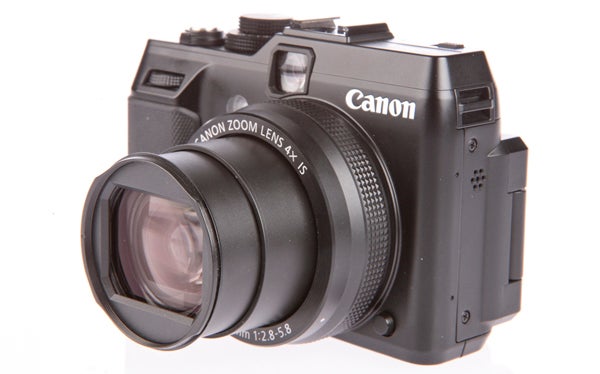
Verdict
Pros
- Class-leading image quality for an advanced compact
- Impressive high ISO performance
- Super sharp lens that captures lots of detail
- Vari-angle LCD screen adds flexibility
- Useful built-in 3-stop ND filter
Key Specifications
- Review Price: £699.99
- 14MP 1.5in CMOS sensor
- 28-112mm F2.8-5.8 lens
- 3in 920k dot fully-articulated LCD screen
- 1080p video recording at 24fps
- 14-bit RAW shooting
The Canon G1X is the latest camera to grace Canon’s perennially popular G-series range of advanced compacts. However, for reasons that will become clear soon enough, the G1X marks quite a departure from previous models in the range.
Aimed predominantly at enthusiast photographers, it aims to be a ‘take anywhere’ camera that still has DSLR-like handling and image quality. With a launch price of around £700, the G1X is around £300 more than the last G series camera, the Canon PowerShot G12. We expect this price to stick for a while, but once it does come down the G1 X will undoubtedly broaden its appeal quite dramatically. With it arriving in UK at the end of February 2012, we can hope those price drops will happen sooner rather than later.
For a second opinion, check out the video review on our sister site: WhatDigitalCamera.com
In terms of hardware, the most interesting thing about the G1X is undoubtedly the brand new sensor at the heart of it. The new model ditches the 1/1.7inch sensor (itself larger than a 1/2.3inch sensor used on most compacts) that has been the mainstay of previous G-series models in favour of an all-new 18.7 x 14mm (1/0.11in if you want to think of it that way) CMOS chip that packs in 14.3megapixels (MP).
This new sensor is over six times bigger than the 10MP CCD sensor employed by the G12, and only slightly smaller than the APS-C sensors Canon uses in its consumer DSLR range. Interestingly, Canon claims that the individual pixel size along with the pixel density of this new sensor matches that of the APS-C chip found inside the EOS 600D.
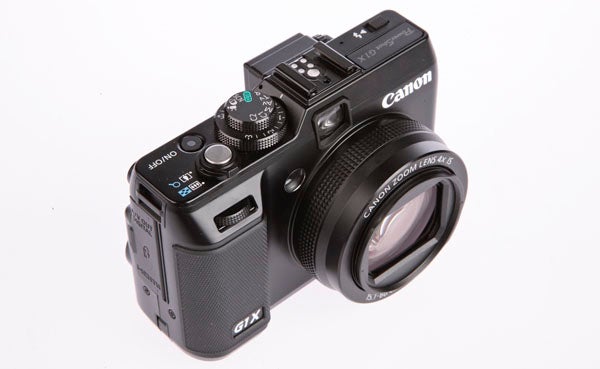
Given that Canon is now the only major manufacturer not to offer a compact system camera range, the G1X is certainly an interesting proposition. While it doesn’t offer the flexibility of interchangeable lenses it does have a relatively long range on its zoom lens. Moreover the sensor is actually marginally bigger than the Micro Four Thirds chip used on such cameras as the Panasonic G3 and Olympus E-PL3 as well as being quite some way bigger than the Nikon CX standard too. This does raise some interesting questions as to the positioning of the G1X.
Could the G1X be Canon’s long-awaited response to the burgeoning CSC market, or will we see a more conventional interchangeable-lens CSC from Canon later in the year? If we do (and our suspicion is that we will) then what are the chances of finding the G1X’s sensor at the heart of it? Only time will tell of course, but in the interim (and irrespective of whether it’s by accident or design), Canon has come up with something of a curveball that is sure to present plenty of potential CSC buyers with an interesting alternative/dilemma.
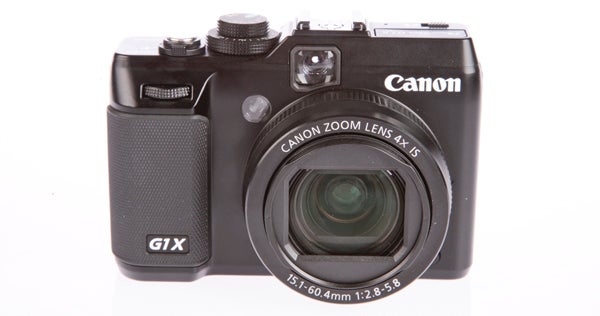
Given the hardware and price specifications of the G1X, it’s actually quite tricky to pinpoint its main competitors. Ultimately, it’s a camera that bridges the gap somewhere between advanced compact and compact system camera (minus the interchangeable lenses). For this reason we’d be just as inclined to group it with the likes of the Sony NEX-5n, Nikon J1, Olympus E-PL3 or Panasonic GX1 as we would with the Nikon P7100, Panasonic LX5 and Olympus XZ-1.
Perhaps we’d better off simply judging the G1X on its own merit. In which case, let’s take a closer look on what’s on offer…
As an advanced compact it comes as no surprise that the Canon PowerShot G1X is able to
record 14-bit Raw image files as well as regular JPEGs. Maximum output
at 14MP is 4352 x 3264 pixels, but it’s also possible to shoot at 7MP,
2MP and 0.2MP. Alternative aspects include 16:9, 3:2 and 1:1, along with
the decidedly portrait orientated 4:5.
Sensor size and
resolution aren’t the only areas to receive an upgrade over previous
G-series models. Whereas the G12’s movie recording abilities max out at
720p HD the G1X ups the ante to 1080p Full HD at 24fps, backed up by
720p HD and 640 x 480 VGA quality options. Sound is recorded in stereo,
but there’s no port for an external microphone, which is a silly slip
up. Sensitivity has been boosted too, with the G1X offering ISO 100 to
12,800 in standard mode – compared to the G12’s top setting of ISO 3200.

Indeed,
there are very few areas where the G1 X is unable to trump the G12. The
only obvious exception being that the optical capabilities of the G1X’s
fixed zoom have been reigned in to 4x – as opposed to 5x on the G12.
Nonetheless, the new lens still offers the 35mm focal equivalent of
between 28mm and 112mm. Maximum aperture rises incrementally from f/2.8
at 28mm to f/5.8 at 112mm and the lens further benefits from Canon’s
Image Stabilisation (IS) technology for up to four stops of anti-blur
control at slower shutter speeds and longer focal lengths.
One
welcome carry-over from previous models is the built-in 3-stop Neutral
Density (ND) filter that allows you to shoot at slower speeds in
brighter conditions. A practical application of this feature is the
ability to capture moving water in landscape compositions. In addition
to the ND filter, the G1 X also offers an automatic HDR mode that can
automatically capture and then blend three images at different EV values
for enhanced dynamic range.

You can achieve some great flowing water effects using the Canon PowerShot G1 X’s inbuilt ND filter
On the back of the camera sits a
3in, 921k-dot vari-angle LCD monitor. This is attached to the camera via
a side-hinge, which enables the screen to be pulled away from the body
and rotated through 270-degrees. This offers plenty of flexibility for
shooting at odd angles, or for composing self-portraits with. One
further benefit is that the screen can be folded back in towards the
body to protect it from scratches when the camera’s not in use.
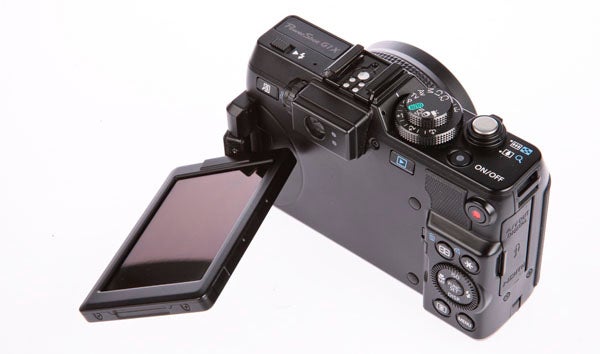
Should
you want to hold the camera to eye-level then there is a small optical
viewfinder, although it does feel a bit self-defeating in use owing to
the fact that it’s a) tiny and b) only covers 77% of the frame at a
slightly offset angle from the true lens view. It’s a useful backup for
quick composition, though, particularly in bright conditions.
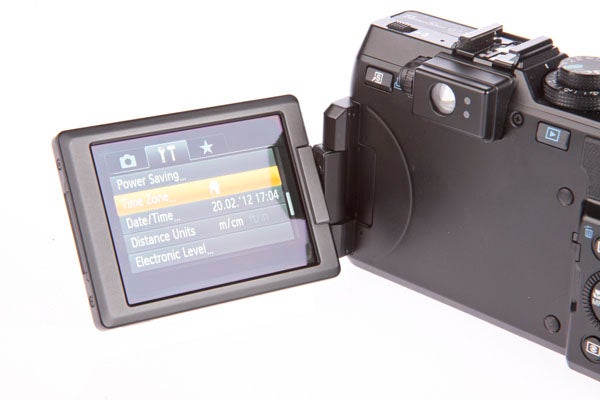
In
terms of overall size, the G1X is noticeably bigger than any of its
G-series predecessors and is, by some distance, the largest advanced
compact currently on the market. Indeed, it could even be said that it
stretches the very idea of ‘compact’ to its limits. While the body
accounts for a small proportion of its increased dimensions, it’s
primarily the larger lens that accounts for the extra bulk, jutting out
from the body by around 35mm rather than sitting flush like previous
models. This is pretty much unavoidable however, and stems from the fact
that larger sensors require a wider image circle, which in turn
requires a larger lens. All said and done though, the G1X does just
about remain small enough to fit inside a coat pocket.
As with
previous G-series models the handgrip is a relatively bulky albeit
low-profile affair. Despite or perhaps even as a result of this, it’s
actually quite a comfortable camera to hold, with the roughly textured
hard rubber finish on the finger-grip and thumb-rest making it feel
quite secure in the hand too.
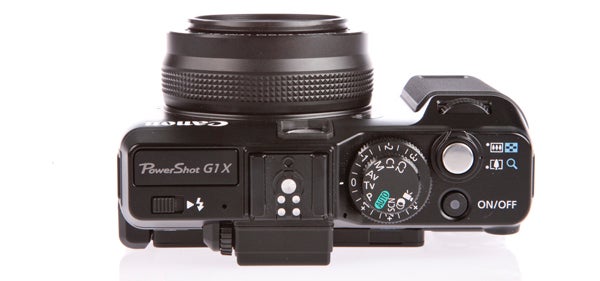
There’s a good range of physical
controls on board that enable direct access to most of the most
regularly used settings. We did find that the ergonomics of the camera
and the way it sits in the hand led to us inadvertently pressing the
Func Set button on more than a few occasions though, which can be
annoying if you happen to be in the middle of composing a shot and the
in-camera quick menu suddenly pops up on to the screen. And while the
menu layout is intuitive enough (especially to precious Canon owners) it
does feel a tad sluggish to browse.
Befitting its status as an
advanced compact, the G1X offers the regular DSLR quartet of exposure
modes, namely Program, Aperture-priority, Shutter-priority and Manual.
These are supplemented by a fully Automatic mode for those
point-and-shoot moments, 13 individually selectable Scene modes and a
surprisingly generous selection of Creative Filter digital effects.
Rounding things off are two user-defined Custom exposure settings.
The Canon G1X switches on and becomes ready to shoot in a fraction under four
seconds which hardly makes it the fastest camera out of the blocks.
Autofocus modes are limited to a user-selectable single-point FlexiZone
mode with good frame coverage that extends quite close to the edges and
corners; a fully automatic Face AiAF mode that priorities face detection
and which is capable of detecting more than one face in the same scene;
and, lastly, a Tracking AF mode that works adequately with slow-moving
subjects but struggles with fast-moving ones.
Overall AF speed
is actually a little bit slow for a camera of this type, price and
specification; it certainly doesn’t feel like a big improvement over the
G12. Even in good light the time taken for the AF to lock on to its
target is far from instant, while in less than ideal light conditions it
slows down even further. While this won’t have any dramatic effect on
considered shots where time isn’t an issue, it does limit the camera’s
ability to take snatched, candid shots – especially in poor light.
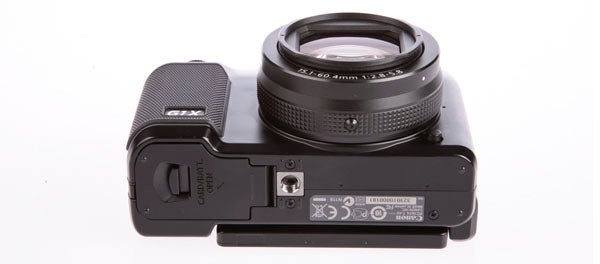
What
is of more concern, however, is the poor close focusing distance of the
28-112mm zoom. Canon claims the minimum focus distance as 20cm when the
camera is being used in Macro mode although we measured it as closer to
23cm. Taking the camera out of Macro, minimum focus distance jumps to
around 35cm, and that’s at its 28mm widest! Zoom in a bit and you’re
soon looking at around 1.5meters minimum distance, and just under two
metres at 112mm. The upshot of all this is that it’s hard to recommend
the G1 X as a serious tool for dedicated Macro enthusiasts.
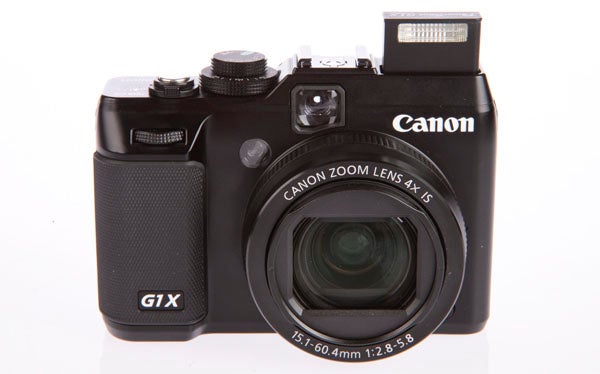
Processing
times are, on the whole, are fairly respectable although hardly
class-leading either. We did find the sluggish AF performance slowed
things down someway when using the camera in Single-shot drive mode
though. In fact, in repeated tests, we were only able to reel off four
full-res JPEGs inside ten seconds. Switching to Raw capture this dropped
to three, with the same result in simultaneous Raw and JPEG shooting.
Switching
over to Continuous mode (whereby the camera only focuses for the first
image), we managed eight full-res JPEGs inside ten seconds, although Raw
(and also simultaneous Raw and JPEG) capture was actually slightly
faster at around 10 frames. Lastly, with the camera set to Continuous AF
(where the AF remains active throughout the burst) the speed dropped to
around eight frames per 10 seconds in JPEG only, seven frames in Raw,
and six on simultaneous Raw and JPEG.
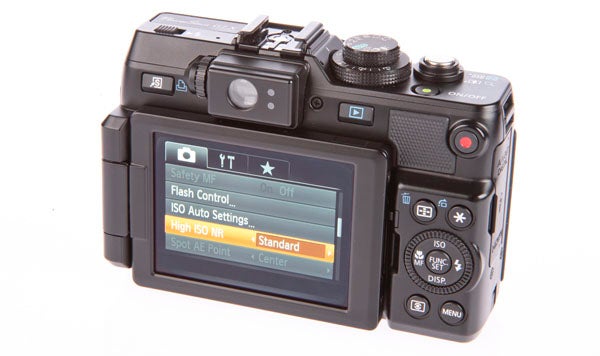
Overall image quality is,
as might be expected, very good indeed. There are many aspects that
particularly impress. The first of these is the optical quality of the
28-112mm fixed zoom. This produces really impressive, almost DSLR-like
levels of sharpness and detail and across the whole frame too, with only
occasional instances of purple fringing on high-contrast borders
letting the side down. As might be expected, there is some barrel
distortion at 28mm however this soon disappears as you extend the zoom.
Thanks to the larger sensor, it’s also possible to get some
fantastically shalllow depth of field effects – just so long as you can
work around the close-focusing issues mentioned above.
Colour,
tonality and white balance are another three areas in which the G1 X
excels. Canon has a deserved reputation for making cameras that produce
pleasingly vibrant and snappy colour while managing to remain lifelike
and the G1 X is no exception. Of course, you can fine tune the way you
want your images to look using the My Colours menu, with a ramped-up
‘Vivid’ and toned-down ‘Neutral’ offered alongside settings such as
‘Positive Film’ and ‘Lighter Skin Tone’ to name but four options. White
balance is perfectly consistent when left on the AWB setting, which is
one less thing to worry about.
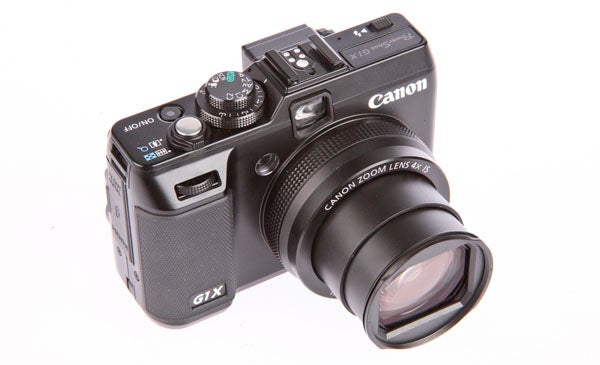
Metering is accurate and reliable
on the whole especially when the camera is being used in flat or even
lighting conditions. High-contrast situations are a little trickier due
to the fact that the metering system relies heavily on the positioning
of the FlexiZone AF box. In such situations a ‘wrongly’ placed box can
lead to blown highlights. Thankfully, the EV Compensation dial is found
within easy reach on the top of the camera, with /-3EV on offer to
correct matters.
Perhaps the biggest single strength of the G1 X,
however, is ISO performance. Frankly, we were blown away by just how
well the G1 X handles noise at higher sensitivities. While ISO 100 to
400 might be expected to deliver noise-free results given the size of
the sensor (which they do), it’s from ISO 800 to ISO 3,200 that really
impresses – even at the higher settings, the G1 X’s images keep noise
almost entirely at bay while retaining plenty of fine detail, even in
shadow areas. The top settings of ISO 6,400 and 12,800 do show a gradual
decline in quality along with an increase in noise, but even these
remain perfectly usable at smaller sizes.
Verdict
The
Canon G1 X is the company’s latest flagship advanced compact and
benefits from a bespoke sensor that is only slightly smaller than what
Canon uses in its APS-C equipped DSLRs. The advantages of this larger
sensor are immediately clear to overall image quality, with the G1 X
offering class-leading performance in this respect. However, in other
areas the G1 X lets itself down somewhat with sluggish operation and
niggly performance issues. Image quality purists may well be willing to
forgive these flaws, however anyone in the market for a snappy advanced
compact with quickfire operation may well be slightly disappointed.

ISO 100 is sharp and noise free…

…as is ISO 200.

ISO 400 shows no great loss of quality from ISO 200.

By ISO there is the merest hint of softening, although it’s only really visable at 100% and above.

ISO 1600 proves perfectly usable – even at 100%

ISO 3200 is still holding up exceptionally well, with plenty of shadow detail retained.

ISO 6400 is the point where things start to go downhill.

The top setting of 12,800 is noticeably soft, but remains just about acceptable when scaled down for internet use.







Trusted Score
Score in detail
-
Value 8
-
Design & Features 8
-
Image Quality 9
-
Build Quality 9
Features
| Camera type | Digital Compact |
| Megapixels (Megapixel) | 14.3 Megapixel |
| Optical Zoom (Times) | 5x |
| Image Sensor | 18.7 x 14mm, CMOS |

